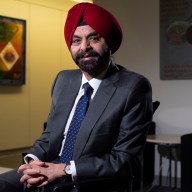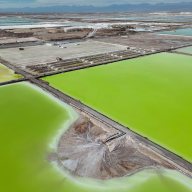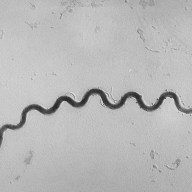By Matt Spetalnick, David Brunnstrom and John Walcott
WASHINGTON (Reuters) – U.S. intelligence experts are trying to build a profile of Kim Jong Un to give President Donald Trump a competitive edge in one of the most consequential summits since the Cold War, but they face a huge challenge – figuring out a secretive North Korean ruler few people know much about.
Following a long tradition of arming U.S. presidents with political and psychological dossiers of foreign leaders ahead of critical negotiations, government analysts are gathering every new bit of information they can glean about Kim and making adjustments to earlier assessments of what makes him tick, U.S. officials told Reuters.
They will rely in part on the impressions drawn by CIA director Mike Pompeo, who just weeks ago became the first Trump administration official to meet Kim. Pompeo, Trump’s pick to become secretary of state, came back from Pyongyang privately describing the young North Korean leader as “a smart guy who’s doing his homework” for the meetings, according to one U.S. official, who described Pompeo’s personal view of Kim for the first time.
The profile will also include intelligence gathered in past debriefings of others who have interacted with Kim, including ex-NBA star Dennis Rodman, Kim’s former classmates at a Swiss boarding school and South Korean envoys, other U.S. officials said, speaking on condition of anonymity.
All of this is being used to update the U.S. government’s classified file on Kim’s behavior, motives, personality and leadership style to help Trump and his aides develop a strategy for dealing with Kim at the expected first-ever meeting of U.S. and North Korean leaders.
A White House official declined to confirm any specifics about the drive to better understand Kim, except to say: “There is a robust whole of government effort under way to prepare for the president’s summit,” which is targeted for late May or early June.
Despite that, direct knowledge of Kim remains limited – a “black box,” according to one U.S. official familiar with the profiling efforts – especially given the scarcity of spies and informants on the ground and the difficulties of cyber-espionage in a country where Internet usage is minimal.
When Kim first came to power, the CIA predicted that Kim’s rule might be short-lived. Seven years later that prediction has been dropped and he is now seen as a shrewd and ruthless leader. More recently, many U.S. experts were caught off-guard by how nimbly Kim shifted from his saber-rattling drive to build a nuclear missile arsenal to diplomatic outreach.
“RATIONAL ACTOR”
The emerging U.S. consensus on Kim is similar to what many outside experts have publicly concluded. He is seen as a “rational actor,” said U.S. officials – not the “total nut job” that Trump once branded him. He craves international stature but his main aim is “regime survival” and perpetuating his family dynasty, suggesting it will be hard for him to agree to full nuclear disarmament, the officials said.
He is ruthless enough to have had relatives executed but now feels secure enough in power to gamble on Trump, they said. In terms of personality, he is seen more like his charismatic grandfather, Kim Il Sung, than his more camera-shy father.
His dispatch of his sister to the Winter Olympics in South Korea in February and a rare appearance by his wife when South Korean envoys visited in March demonstrates an effort to humanize his leadership abroad, they added.
Shielded by North Korea’s extreme opaqueness, Kim has posed a special set of profiling problems for U.S. spy agencies. U.S. Director of National Intelligence Dan Coats said in a speech earlier this month that North Korea’s leadership was “one of the hardest collection components out there” for intelligence gathering.
U.S. experts will be closely studying both Kim’s words and body language at his historic summit with South Korean President Moon Jae-in on Friday, officials said.
U.S. intelligence analysts have spent years examining Kim’s family history, speeches, photos and video, and they are now closely analyzing images and reports of his recent high-profile meetings with South Korean and Chinese officials.
U.S. authorities have also interviewed North Korean defectors and even resorted to second-hand sources such as the memoir of a Japanese sushi chef who once worked for the Kim family, several officials and experts said.
Amid the scramble to put together the Kim profile, the U.S. officials said another challenge was determining how much information to give Trump – known to have little patience for detailed briefings or lengthy documents – and then persuading him not to act purely on gut instinct, as he often does with foreign leaders.
Briefers are expected to limit their presentation to an abridged version, accompanied by photos, maps, drawings and video, the officials said.
It will not be the first time intelligence officers have relied on visual aids to help get him up to speed on North Korea.
Early in his administration, Trump was shown a scale model of North Korea’s sprawling nuclear bomb test site with a removable mountaintop and a miniature Statue of Liberty inside so he could grasp the size of the facility, two U.S. officials said.
A White House official declined comment on the episode.
Trump’s defenders say he is adept at absorbing facts visually. “His successful building career means he was very good at studying architectural renderings and floor plans. So he’s a visual learner, and it works well for him,” the White House official said.
“IT’S NEVER PERFECT”
For decades, U.S. administrations have ordered up profiles of foreign leaders, especially those of adversaries such as Saddam Hussein of Iraq, Muammar Gaddafi of Libya and Fidel Castro of Cuba. Many other governments conduct similar studies.
Such assessments, which originated with the U.S. government’s efforts to better understand Germany’s Adolf Hitler, have sometimes been deemed helpful to U.S. policymakers.
Former President Jimmy Carter wrote in his memoir “Keeping Faith” that in-depth profiles of Israeli Prime Minister Menachem Begin and Egyptian President Anwar Sadat paid “rich dividends” in helping him reach a 1978 peace accord.
But the “know thy enemy” practice has been far from fool-proof.
For instance, initial bare-bones assessments of Kim put together soon after he took power in 2011 suggested he was possibly too inexperienced to survive internal struggles but that if he did he would likely be more interested in reforming North Korea’s battered economy than pursuing nuclear weapons.
“It’s never perfect,” acknowledged Jerrold Post, a psychiatrist who founded the CIA’s center for the study of political personality and has profiled both Kim and his father. “But we need to do our best to understand how Kim sees the world.”
Post, now in private psychiatric practice in Maryland, said he was consulted recently by a Trump aide who was due to brief the president. He declined to elaborate on what advice he gave.
“We all listen to the forensic psychiatrists of the intelligence community,” said Wendy Sherman, a former U.S. negotiator with North Korea who traveled to Pyongyang with then-Secretary of State Madeleine Albright in 2000 to meet Kim’s father, Kim Jong Il.
But she suggested face-to-face contact was the best way to take the measure of a North Korean leader. “I’m sure Mike Pompeo, having gone with an intelligence team, came back with a lot of useful information,” she told Reuters.
(Additional reporting by by Soyoung Kim in Seoul, writing by Matt Spetalnick; Editing by Ross Colvin)















